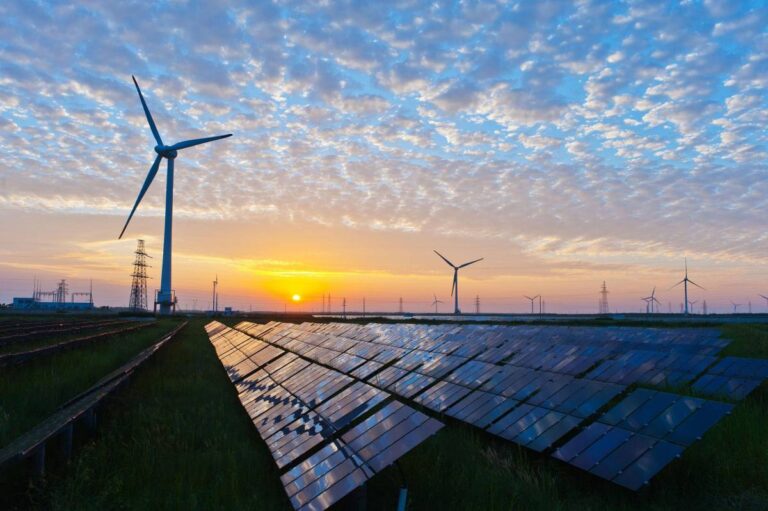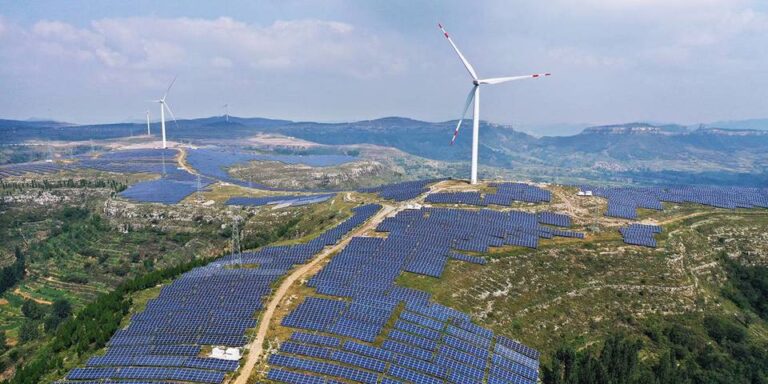For the past year, oil consuming countries have become increasingly anxious at crude’s resurgence: first to $50 a barrel, then $75 and now to more than $85. And when Vladimir Putin, one of the leaders of the OPEC+ cartel, warned that $100 a barrel was a distinct possibility, the alarm bells really started ringing.
Now, as quickening inflation pushes some central banks towards earlier-than-expected rate of interest hikes, the U.S. India, Japan and different consuming international locations are placing the strongest diplomatic strain on the cartel in years.
Behind closed doorways, an intense marketing campaign is being waged to influence OPEC+ to hurry up its output will increase, in line with a number of diplomats and business insiders concerned within the contacts. The cartel, which meets just about on Nov. 4 to assessment coverage, is at the moment boosting output at a price of 400,000 barrels a day every month.
The personal efforts come on prime of current public appeals. The Biden administration is more and more alarmed by rising gasoline costs which have reached a 7-year excessive, and has been calling on OPEC+ for weeks to pump extra oil. Japan, the world’s fourth-largest oil client, took the uncommon step of including its voice to these calls in late October — a primary for Tokyo since 2008. India, the third-largest client, has additionally requested for extra crude. China has been silent in public, however is equally vocal in personal, diplomats stated.
“We found ourselves in an energy crisis,” Amos Hochstein, the highest U.S. power diplomat, stated this week, reflecting a view broadly held view by large oil consuming nations. “Producers should ensure that oil markets and gas markets are balanced.”
U.S., Japanese and Indian officers have spoken privately amongst themselves and likewise reached out to different large customers and oil-producing international locations. The calls began round three weeks in the past, however have intensified in current days after costs handed $85 a barrel.
The Japanese “government is currently asking oil-producing countries to increase production in the Middle East,” in line with Tsutomu Sugimori, chairman of the Petroleum Association of Japan. “As the petroleum industry, we hope oil-producing countries, including OPEC, will take appropriate steps so as not to hinder a full-fledged recovery of the world’s economy.”
So far, Saudi Arabia and others have refused to go faster, arguing the month-to-month 400,000 barrel-a-day additions are sufficient to fulfill the urge for food for oil in a world financial system nonetheless nursing the injuries of the pandemic.
“We are not yet out of the woods,” Saudi Energy Minister Prince Abdulaziz bin Salman stated on Bloomberg Television final week. “We need to be careful. The crisis is contained but is not necessarily over.”
The prince’s feedback have been echoed in personal and public by others inside the OPEC+, an alliance of nations accounting for almost two-thirds of the world’s oil provide. Azerbaijan Energy Minister Parviz Shahbazov stated for instance there wasn’t a must rush quicker output will increase. “We have agreed on a very wise and smart program for months to come,” he stated.
Saudi Arabia will most likely get its approach if it pushes to stay with a 400,000 barrel-a-day hike subsequent. For many OPEC+ officers they’re being made a scapegoat for a disaster they didn’t create. The downside, they argue, is just not oil however hovering pure gasoline and coal costs, which in flip have boosted electrical energy costs. Even if the cartel was to go quicker, that wouldn’t resolve these shortages, they stated.
Some within the group who can be open to doing extra, nevertheless, if Saudi Arabia took the lead, a number of OPEC+ delegates stated, asking to not be named earlier than the assembly takes place.
Shifting Mood
For most of this 12 months oil-consuming nations accepted OPEC+ was doing sufficient. But after oil costs rose from $70 to greater than $85 a barrel and crude inventories in industrialized international locations declined sharply over the past couple of months, the temper has shifted. Now officers from consuming international locations consider the oil market is under-supplied.
Many consuming international locations have been reluctant to name extra overtly for additional oil manufacturing simply earlier than a serious UN local weather change summit in Glasgow, Scotland, referred to as COP26. But even that notion downside is beginning to fade. Jake Sullivan, the U.S. mational safety advisor, defined that Washington might combat in opposition to local weather change and guarantee there’s sufficient power to gasoline financial progress within the quick future.
“Our view is that the global recovery should not be imperiled by a mismatch between supply and demand,” Sullivan stated on board Air Force One whereas en path to Rome for this week’s Group of 20 summit. “And action needs to be taken,” he stated, revealing that American diplomats have been in contact with “the largest consuming countries in the world to include China as well as India, Japan, Korea, the Europeans, and others.”
President Joe Biden “will have those conversations at the G-20,” Sullivan stated. “We will see what comes as a result of those conversations.”
Most Read from Bloomberg Businessweek
©2021 Bloomberg L.P.










DENVER – For decades, we at the Rocky Mountain Institute (now RMI) have argued that the transition to clean energy will cost less and proceed faster than governments, firms, and many analysts expect. In recent years, this outlook has been fully vindicated: costs of renewables have consistently fallen faster than expected, while deployment has proceeded more rapidly than predicted, thereby reducing costs even further.
Thanks to this virtuous cycle, renewables have broken through. And now, new analyses from two authoritative research institutions have added to the mountain of data showing that a rapid clean-energy transition is the least expensive path forward.
Policymakers, business leaders, and financial institutions urgently need to consider the promising implications of this development. With the United Nations Climate Change Conference (COP26) in Glasgow fast approaching, it is imperative that world leaders recognize that achieving the Paris climate agreement’s 1.5° Celsius warming target is not about making sacrifices; it is about seizing opportunities. The negotiation process must be reframed so that it is less about burden-sharing and more about a lucrative race to deploy cleaner, cheaper energy technologies.
With the world already suffering from climate-driven extreme weather events, a rapid clean-energy transition also has the virtue of being the safest route ahead. If we fail at this historic task, we risk not only wasting trillions of dollars but also pushing civilization further down a dangerous and potentially catastrophic path of climate change.
One can only guess why forecasters have, for decades, underestimated the falling costs and accelerating pace of deployment for renewables. But the results are clear: bad predictions have underwritten trillions of dollars of investment in energy infrastructure that is not only more expensive but also more damaging to human society and all life on the planet.
We now face what may be our last chance to correct for decades of missed opportunities. Either we will continue to waste trillions more on a system that is killing us, or we will move rapidly to the cheaper, cleaner, more advanced energy solutions of the future.
New studies have shed light on how a rapid clean-energy transition would work. In the International Renewable Energy Agency (IRENA) report The Renewable Spring, lead author Kingsmill Bond shows that renewables are following the same exponential growth curve as past technology revolutions, hewing to predictable and well-understood patterns.
Accordingly, Bond notes that the energy transition will continue to attract capital and build its own momentum. But this process can and should be supported to ensure that it proceeds as quickly as possible. Policymakers who want to drive change must create an enabling environment for the optimal flow of capital. Bond clearly lays out the sequence of steps that this process entails.
Examining past energy revolutions reveals several important insights. First, capital is attracted to technological disruptions, and tends to flow to the areas of growth and opportunity associated with the start of these revolutions. As a result, once a new set of technologies passes its gestation period, capital becomes widely available. Second, financial markets draw forward change. As capital moves, it speeds up the process of change by allocating new capital to growth industries, and by withdrawing it from those in decline.
The current signals from financial markets show that we are in the first phase of a predictable energy transition, with spectacular outperformance by new energy sectors and the de-rating of the fossil-fuel sector. This is the point where wise policymakers can step in to establish the necessary institutional framework to accelerate the energy transition and realize the economic benefits of building local clean-energy supply chains. As we can see from market trends highlighted in the IRENA report, the shift is already well underway.
Reinforcing the findings from the IRENA report, a recent analysis from the Institute for New Economic Thinking (INET) at the Oxford Martin School shows that a rapid transition to clean energy solutions will save trillions of dollars, in addition to keeping the world aligned with the Paris agreement’s 1.5°C goal. A slower deployment path would be financially costlier than a faster one and would incur significantly higher climate costs from avoidable disasters and deteriorating living conditions.
Owing to the power of exponential growth, an accelerated path for renewables is eminently achievable. The INET Oxford report finds that if the deployment of solar, wind, batteries, and hydrogen electrolyzers continues to follow exponential growth trends for another decade, the world will be on track to achieve net-zero-emissions energy generation within 25 years.
In its own coverage of the report, Bloomberg News suggests as a “conservative estimate” that a rapid clean-energy transition would save $26 trillion compared with continuing with today’s energy system. After all, the more solar and wind power we build, the greater the price reductions for those technologies.
Moreover, in his own response to the INET Oxford study, Bill McKibben of 350.org points out that the cost of fossil fuels will not fall, and that any technological learning curve advantage for oil and gas will be offset by the fact that the world’s easy-access reserves have already been exploited. Hence, he warns that precisely because solar and wind will save consumers money, the fossil-fuel industry will continue to try to slow down the transition in order to mitigate its own losses.
We must not allow any further delay. As we approach COP26, it is essential that world leaders understand that we already have cleaner, cheaper energy solutions ready to deploy now. Hitting our 1.5°C target is not about making sacrifices; it is about seizing opportunities. If we get to work now, we can save trillions of dollars and avert the climate devastation that otherwise will be visited upon our children and grandchildren.